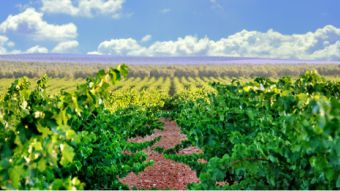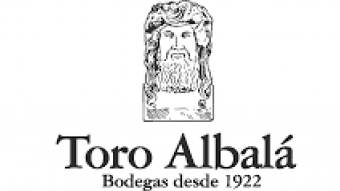Godello, an open secret
Flagship of the Valdeorras D.O. , and also found growing in other Galician D.O.s , as well as in the neighbouring region of Bierzo, this grape variety continues to pleasantly surprise lovers of great white wines.

As the García clan - made up of the eminent Mariano and his offspring, Eduardo and Alberto - usually keeps fairly quiet about its future strategy, few assumed that the new release under preparation, would be a white wine! When it arrived on the market, the new wine was a huge surprise, and not just because no one could conceive of a white Mauro, a transmutation of the famous red Mauro, a big Castilian wine, almost "black" in its intensity and concentration. The new Mauro Godello 2013 is remarkable because the Garcías had never before produced a white.
The surprise created by this new release has turned the spotlight again on the noble Godello, a grape variety which has been bringing us surprising good wines for a few years now. For their very first white, the Garcías selected vineyards in Villafranca del Bierzo, with just two parcels, El Rosal (one hectare) and El Músico (four hectares), planted with Godello clones from the neighbouring Valdeorras region, the great paradise of this grape variety.
Needless to say, the Mauro Godello 2013 does not disappoint: fermented and aged in barrels for eight months, it displays a complex, elegant style, typical of good Godellos, with nuances which are more mineral than fruity, and good ageing potential. If you wish to try it, be warned that only 1,200 bottles have been produced of this first vintage, although Eduardo García, the man behind the wine, expects to be producing 5,000 bottles at some point in the future.
The alternative to Albariño
 Valdesil viñedo Pezas da Portela
Valdesil viñedo Pezas da Portela
To be honest, it is not surprising that the Garcías, being the intelligent red winemakers that they are, chose the Godello to fashion their first white wine. This variety is a little gem which has long remained hidden, along with Galicia’s other native white varietals, the Torrontés, the Treixadura, the Caiño and others, playing second fiddle to the Albariño for decades.
Things started to change just over ten years ago, when the Valdeorras wine producers decided to challenge their neighbours in Rias Baixas, positioning the Godello as a serious alternative to the reigning Albariño. While the latter has a more exuberant aromatic profile, with fragrant floral and fruity nuances, the Godello is more versatile in terms of vinification: resulting in pleasant, seductive young wines, with fine mineral accents, yet also better able to handle contact with oak, due to their generous structure and glycerol character on the palate, which only gets better with bottle age.
Beyond Valdeorras
Now that the virtues of the Godello in Valdeorras have been established, experimental wine lovers will start to look for this grape variety grown in other terroirs and will find that it also grows in other Galician regions: Ribeiro, Monterrei and Ribeira Sacra, often blended with other native white grapes: Treixadura, Albariño, Dona Blanca, Lloureiro Blanca, etc.
Beyond the borders of Galicia, the Godello produces magnificent whites in El Bierzo, as the Garcia family has demonstrated with the aforementioned Mauro Godello (although Mauro Godello is outside the Bierzo D.O. and sold as a Vino de la Tierra de Castilla).
The Godello Elite
 Valdesil viñedo Pezas da Portela
Valdesil viñedo Pezas da Portela
Having described the geography of this grape, all that remains is to reveal which are the best Godellos on offer, starting, of course, with those from Valdeorras. The pioneers, who had us fall for this grape variety, are based here, in this hinterland, the driest in Galicia. They continue to produce some noteworthy white wines. Take, for example, the La Tapada winery, which has taken the virtues of Godello and created a range of four wines: the young, fragrant Guitián Godello, the complex Guitián Godello matured on the lees, the barrel-fermented Guitián Godello for ageing, and finally, the exotic Guitián Godello fermented in acacia, an interesting alternative to traditional fermentation in oak.
Valdesil is another outstanding winery in this D.O., producing six different wines from the Godello. The most interesting of these are made exclusively from grapes grown in small parcels (referred to as "pedrouzos" in this part of the world). Some of these are monumental whites such as the distinguished O Chao, made in very small quantities, the powerful Pezas da Portela or the noble Pedrouzos.
However, the Valdeorras wine producer who has received the most recognition is probably Rafael Palacios, who moved to Valdeorras in 2004. From an old Rioja family, Rafael is the brother of the famous Alvaro Palacios, based in the Priorat. Rafael has been gradually bringing forth little jewels: As Sortes, Bolo, Louro and, above all, the magnificent A Soro, a smooth, creamy and expressive white.
Another Rioja native, who could not resist the lure of Valdeorras, is Telmo Rodriguez, who recently expanded his extensive Compañía de Vinos portfolio with the addition of an excellent white, Branco de Santa Cruz, made from a selection of old Godello, Dona Blanca, Treixadura and Palomino vines growing on granitic slopes near the town of Santa Cruz.
Like a good Riesling
Among the other Galician D.O.s, the Godello distinguishes itself mainly in the Ribeira Sacra, where Dominio do Bibei, advised by Sara Pérez, produces two outstanding whites: the Lapena single varietal and Lapola, where Godello is blended with Dona Blanca. Both are clear expressions of Godello’s typical character when planted in slate soils.
A white worth taking a look at in the Monterrei D.O, is Terra do Gargalo Godello, produced by the winery of designer, Roberto Verino.
Lastly, in the region of Castile, the Godello excels itself in a few white wines, which are still fairly unknown, but which will certainly have people talking in the future. These include the Mengoba, matured in contact with the lees, by Frenchman, Gregory Pérez, or the extraordinary Capricho from Bodegas Gancedo, which ages in the bottle with the nobility of a great Riesling.





